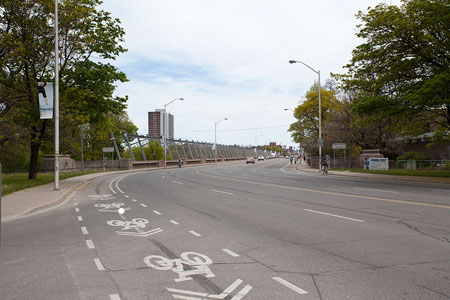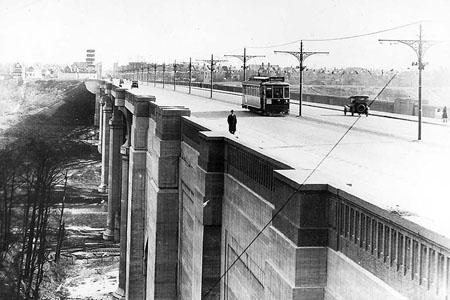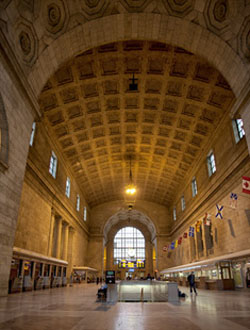This article is from our Toronto Feature series. Features from past programs are not updated.
This content is from a series created in partnership with Museum Services of the City of Toronto and Heritage Toronto. We gratefully acknowledge funding from the Ontario Ministry of Tourism, Culture and Sport, and the Department of Canadian Heritage.
"Landmark Bridge Traverses the Don River"
Michael Ondaatje struggled to find information on the immigrant workers who built the Bloor Viaduct when he was writing his novel In the Skin of a Lion. Financiers were prominent in the record, but the names of the workers were found only at the Multicultural History Society. "Ideally I would love to have this bridge named after him," Ondaatje said of his character, and real-life Macedonian bridge builder, Nicholas Temelcoff.
The official name of the Bloor Viaduct is the Prince Edward Viaduct (for Edward, Prince of Wales, later Edward VIII). Completed in 1918, the 494-metre long steel and concrete arch bridge traverses the Don River Valley, which once divided the city. As a result, development boomed on the east side of the valley. The foresight shown by then Commissioner of Public Works R.C. Harris in installing a railway platform under its roadway was a major factor in the birth of the Bloor-Danforth subway line some 50 years later.
The viaduct became known for having a high suicide rate (with 480 deaths, second only to the Golden Gate Bridge in San Francisco); the construction of "The Luminous Veil" in 2003 ended the bridge's tragic record of suicides.
See also Toronto.

 Share on Facebook
Share on Facebook Share on X
Share on X Share by Email
Share by Email Share on Google Classroom
Share on Google Classroom





